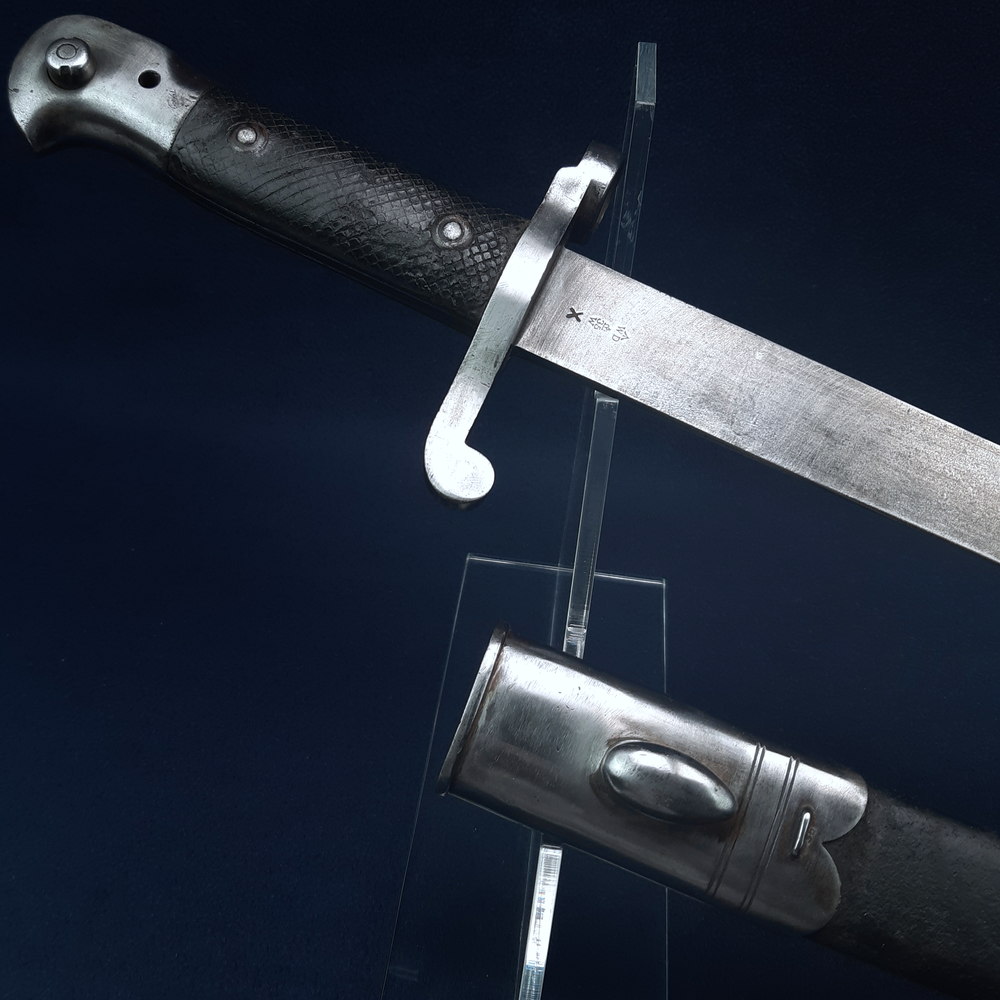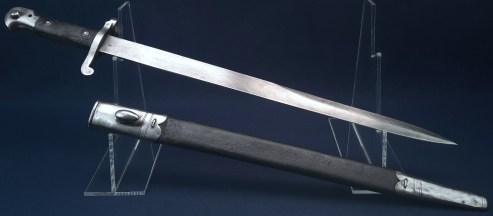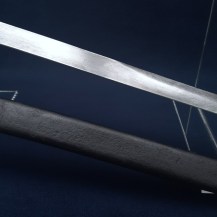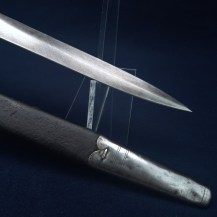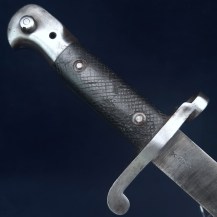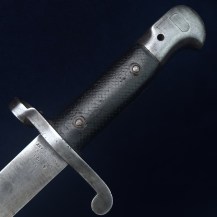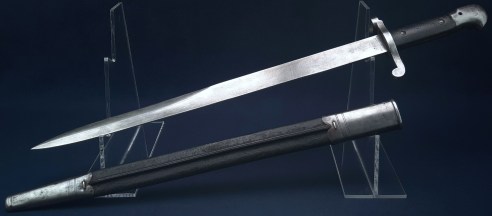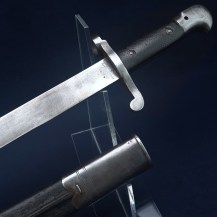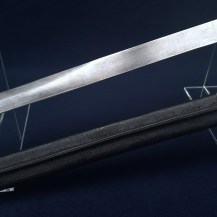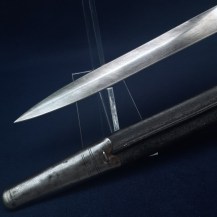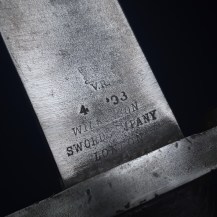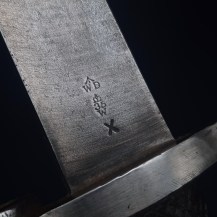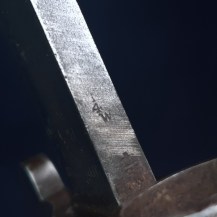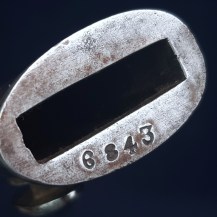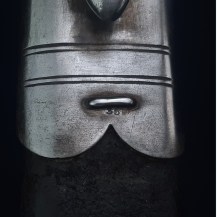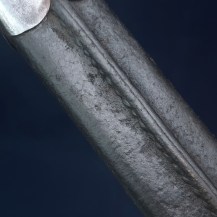British 1887 Pattern MkIII Martini Henry Sword Bayonet by Wilkinson
Straight unfullered spear-pointed blade. Steel hilt with comma-shaped quillon and stepped muzzle ring. Chequered leather grips (technically, knurled) secured by two steel rivets with washers. Black leather scabbard with steel mounts at the throat and chape, with frog hook.
The blade is stamped at the ricasso on one side with a crown over ‘V.R.’ for Queen Victoria, an issue stamp 4 ’98 for April 1898, and the maker’s mark ‘WILKINSON SWORD COMPANY LONDON’. It is stamped on the other side with a War Department mark of a broad arrow over ‘WD’, a crown inspection mark with ‘W’ for Wilkinson and an ‘X’ indicating the blade passed a manufacturer’s bending test. The spine of the blade is stamped with two further crown inspection stamps for Wilkinson.
The scabbard is stamped at the throat with the serial number ‘6843’. The throat piece of the scabbard is stamped under the staple on the front side with a crown inspection mark. The reverse of the scabbard is stamped next to the seam with further marks - these usually consist of another broad arrow over ‘WD’ and another crown inspection mark but are illegible on this example due to rubbing.
The 1887 Pattern bayonet was introduced into service in the face of the ‘British Bayonet Scandal’ – a controversy (eagerly whipped up by the media) that British Army bayonets were made of inferior metal and/or badly heat-treated, and the Army was outsourcing blade manufacture overseas to the detriment of British industry. The Government responded by centralising bayonet manufacture as much as possible at the RSAF in Enfield. However, Enfield was already overstretched and would not be able to manufacture the new pattern for some time.
A tender was put out for private manufacturers to fill the gap – German manufacturers made the cheapest offers but politics moved the government to choose the British firm Wilkinson of Pall Mall. This contract was instrumental in the rise of Wilkinson as a company and they manufactured around 42,000 1887 Pattern MkIIIs in 1888 and 1889, which made up 83% of the total supplied.
The blade has a light patina with some old polishing marks – it appears to have been refinished during its service life as the issue stamp is fresher and less rubbed than the maker’s mark next to it. Only a couple of very tiny nicks to the edge, not readily visible. The hilt and pommel have light patination in their recesses. The leather grips have some moderate handling wear that has somewhat smoothed the knurling, some small spots of losses to the leather on one side. The chape piece of the scabbard has some light dents, these do not interfere with sheathing and drawing. The leather of the scabbard has surface rubbing and some spots of abrasion near the throat and beside the seam. All its stitching remains intact.

